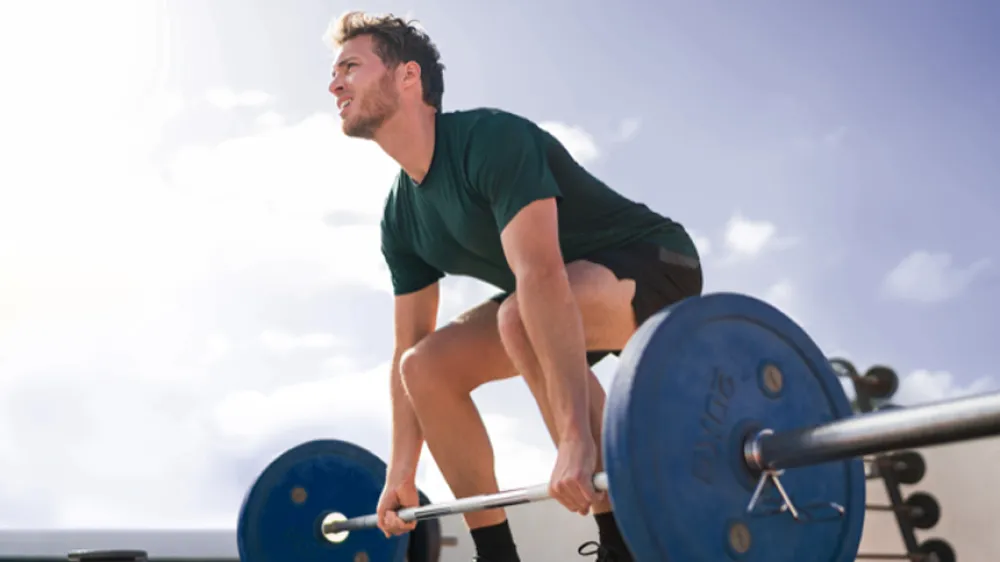Providing your location allows us to show you nearby locations and doctors.
7 ways to avoid exercise-induced migraine

06/06/2023
Stay in the game with effective migraine management strategies
By Hida Nierenburg, MD, Neurology and Headache Medicine, Nuvance Health
No one wants to miss the action because of migraine, whether it is your daily exercise routine or recreational or professional sports. Migraine can quickly sideline you because the neurological disorder can cause severe head pain along with other debilitating symptoms.
A study published in the Journal of Headache and Pain found that 38 percent of participants experienced a migraine from exercise. Exercise-induced migraine is most commonly associated with strenuous sports including rowing, running, swimming, tennis and weightlifting.
Here are seven ways to manage migraine so you can stay in the game.
Do you suffer from migraines? Book Now with a Neurologist
1: Identify and avoid triggers to prevent exercise-induced migraine
First identify what triggers migraines for you and then find ways to avoid them. You may have some or many of these common migraine triggers. A headache specialist can help you identify patterns and what may trigger your migraines.
Common migraine triggers include:
- Alcoholic or caffeinated beverages
- Bright lights, loud noises or strong smells
- Certain types of foods
- Dehydration
- Exercise
- Hormonal changes
- Irregular sleep patterns
- Medications
- Stress
- Weather changes
Related content: Migraine and weather triggers: Tips to manage your symptoms
2: Recognize migraine symptoms early, start treatment sooner and reduce duration of the attack
In addition to identifying triggers, it is also important to identify migraine symptoms. The sooner you treat migraine, the greater chance of stopping a full-blown migraine attack.
Common migraine symptoms include:
- An intense headache that makes you unable to participate in regular activities, such as working on the computer
- Fatigue
- Lightheadedness
- Vertigo
- Nausea
- Vomiting
- Sensitivity to light, sound or smells (at least one must be present to diagnose migraine)
- Visual disturbances
Related content: Should you go to the emergency department for a headache or migraine?
3: Find the right kind of migraine treatment for you
Individuals may experience migraine differently and benefit from preventive, rescue or both kinds of treatment. Your headache specialist will help you find the right kind of treatment for you.
The good news is that there are a variety of treatments ranging from oral and intravenous medicines, injections and wearable devices. Alternative treatments such as acupuncture and massage may also be helpful for you.
Having a proper rescue migraine medication will help shorten the duration and associated symptoms that occur with an attack. The goal is for you to return to normal function with two hours.
Finally, it is also important to know which interventions will help reduce migraine symptoms, such as staying in a dark, quiet room.
Related content: What are the types of migraine?
4: Stay well hydrated to avoid exercise-induced migraine
Water is usually the best way to stay hydrated. Keep a bottle of water with you and drink it before, during and after your workout or sports activity.
5: Avoid strenuous activities in extreme heat to prevent exercise-induced migraine
Exercising or playing a sport in very hot or humid weather can cause dehydration and in turn may trigger migraine. If you have no other option but to play a sport in extreme heat, stay well hydrated and limit sun exposure by staying in the shade and wearing a hat and sunglasses, if possible.
6: Warm up and cool down to avoid exercise-induced migraine
Warming up your body with light movements and stretching may reduce exercise-induced migraine. Similarly, cooling down after working out will gradually reduce your heart rate and may prevent the onset of migraine.
How long someone should warm up or cool down depends on the individual and type of exercise. Talk with your doctor if you get exercise-induced migraine to determine what may work best for you.
7: Know when to see a headache specialist for migraine
Mostly everyone gets headaches that improve on their own or with over-the-counter medication. See a headache specialist if you have:
- Headaches often
- Headaches that last for more than two days
- Severe head pain that disrupts your life
- Other neurological symptoms in addition to head pain
Untreated acute migraines can progress to chronic migraine. You may have chronic migraine if you have more than 15 headache days per month for three consecutive months, with migraine attacks on eight of those days.
Many types of headaches have different treatments. A headache specialist can accurately diagnose you and recommend an effective treatment.
Related content: How to tell the difference between headaches and migraines
The bottom line: There are ways to manage migraine so you can stay active, maintain your exercise routine and keep your competitive edge. Getting a proper diagnosis, recognizing and avoiding triggers and finding the right treatment for you are ways you can reduce migraine days.
Learn more about headache and migraine care at the Nuvance Health Neuroscience Institute.